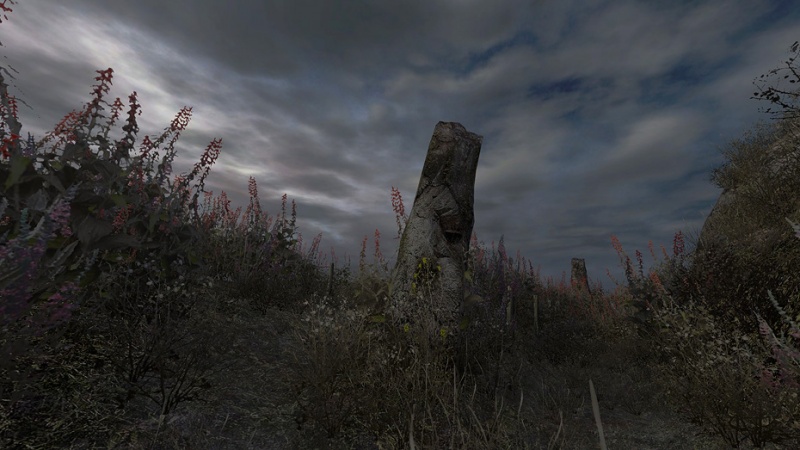
Like a dog wandering amidst the plains and trenches of sleep, there has been something kicking away in the coils of my mind for a very long time. Well, at least since last year. Last year I began embarking on a project that asked myself to find the very root of fear, and recreate it within a game. The game never happened. Incidentally I wandered off on what was a surprisingly contentious emotional catharsis relating to the ideas that this game had sprouted. At the time I may have been pursuing the game because I felt aggravated with the way that a lot of independent developers were being deliberately obtuse for their own hypothetical indie-cred. Then I realised I was probably being a dick. Developers don’t develop games because they want to enforce their own brand of obscurity across the denizens of the internet, they do it because they believe in something personal. I feel that a better way of examining the situation is through a healthy, caustic dose of introspection, and what better way of doing that than pulling on the roots of the idea, hoping they’re attached to something interesting.

The idea struck me that I really needed to recreate this game. Next year I’m suiting up for university -a bachelor of game design and interactive entertainment – and I’ve realised that despite my commitment to the industry, and my delusions of grandeur, I hardly have a game to my name. Perhaps my decision to integrate into the scene was blatantly selfish, but once I submerged myself within the ideologies of the game once more, it all felt right again.
I needed to create a game that probed the depths of the player’s emotional response, but I was unsure of what would bind it all together. The 2D sidescroller may have had the scope to allow no explicit story, and instead a distorted exposition of a metanarrative, but I guess the idea of the original was to allow the player the freedom to craft their own interpretation; their own personal narrative. Now that I have stepped into the broad expanses of the 3D source engine, I feel as if old dilemmas are reopening with the need to deal with a less focussed, and less linear experience.

The lack of a solid narrative worked within the original, because it was a short, linear and stylish experience for the player to lose themselves in. I’d be making a mistake if I didn’t cite Passage here (and despite my prior hang-ups) as it managed to deliver emotion in a way that could never accurately translate into the third dimension. In looking at the game from this perspective, Passage, and therefore the original version of my game, were self-contained experiences that didn’t rely on the extended attention of the player to impart their mood. Conversely, the translation into 3D, places the player into a much more realistic environment in which they attempt to associate with.

The issue at hand is that there is a permanent physical barrier between player and game, and no matter how immersive the game may be, the player can forcibly detach themself at will. This means that the attachment of the experience itself is not necessarily enough to keep the player engaged for the duration of the game. Dear Esther embraced the balance of the experience and the plot by delivering narrative through a voiceover, that in turn, allowed them to make their own interpretation of both the narrative and the island that they were exploring. Had the original narrative been left solely to visual prompts, it would have likely faced either loss of meaning or overcomplication seeing as it embodied quite an ambiguous tale. However, it could be said that in its current form, the story itself was not ideal as it provided a considerable amount of confusion, that was only visually clarified in moderation. Ultimately, Dear Esther provided a short, thoughtful experience that was meant to be felt, not necessarily understood, and perhaps this is the greatest triumph of storytelling that can be beheld.
As I’ve been working my way through the creative process of re-designing my mod, I’ve encountered the same issue of the narrative versus the experience as I want to capture the nature of the implicit experience that the player can create for themselves, yet I feel as if it is not enough substance to keep the player engaged. Perhaps it is a technical limitation, hinged upon my own knowledge of the engine, that prevents me from visually conveying the element that I wanted to impart. Fear.
Perhaps the narrative cannot exist without the experience, and vice versa, for one usually attempts to complement the other within this particular environment. Since the player is being engaged more intimately with the environment, it would only make sense for it to be as important as the underlying narrative in propelling the player through the experience. I feel as if there is no definitive answer to whether the players engagement with the world is more important than a narrative, for it will always fluctuate depending on the level of engagement expected from the player, but that’s the territory of a different beast. I’m beginning to think this stream of consciousness has no logical conclusion.